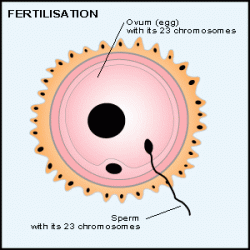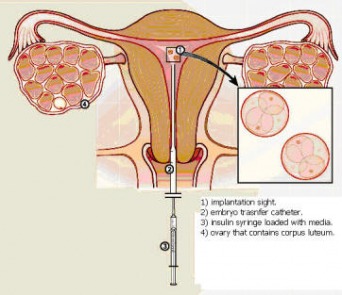Embryo Transfer
This is the last stage in the IVF-Designer Baby process. There are numerous factors which can determine the correct amount of embryos to be transplanted back into a women’s uterus. These include the age of the woman, the health of the embryos and the risk of multiple pregnancies which can occur. Some countries - to avoid multiple pregnancies from IVF – only allow two embryos to be inserted into the uterus. The UK is one of these.
The insertion itself is relatively pain free and easy. Firstly, in order to clearly see the uterus and surrounding areas, it is required that a women drink large amounts of fluids before arriving at her clinic, in order to keep the bladder at its largest and most visible amongst the other internal organs. The embryos are immersed in a fluid and stored in a catheter.
(Note: The Designer Baby process differs from standard IVF as this stage of the process requires only the screened, desired embryos to be inserted back in. In some cases, the remaining, “good” embryos can be of a very small number when compared with IVF. Standard IVF doesn't involve any screening at all.)
The embryos are usually deposited in the back of the uterus as it is the best spot for functioning pregnancies. The cervix is cleaned of any mucus and the exact spot is determined through ultrasound. Then, from inside the catheter, the embryos are deposited into the uterine lining.
The embryos are usually deposited in the back of the uterus as it is the best spot for functioning pregnancies. The cervix is cleaned of any mucus and the exact spot is determined through ultrasound. Then, from inside the catheter, the embryos are deposited into the uterine lining.


